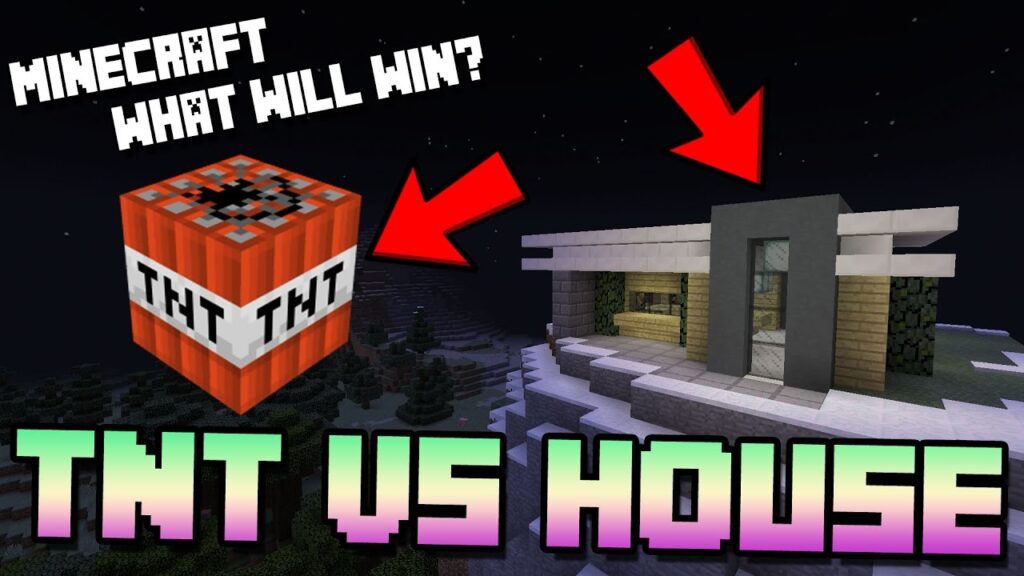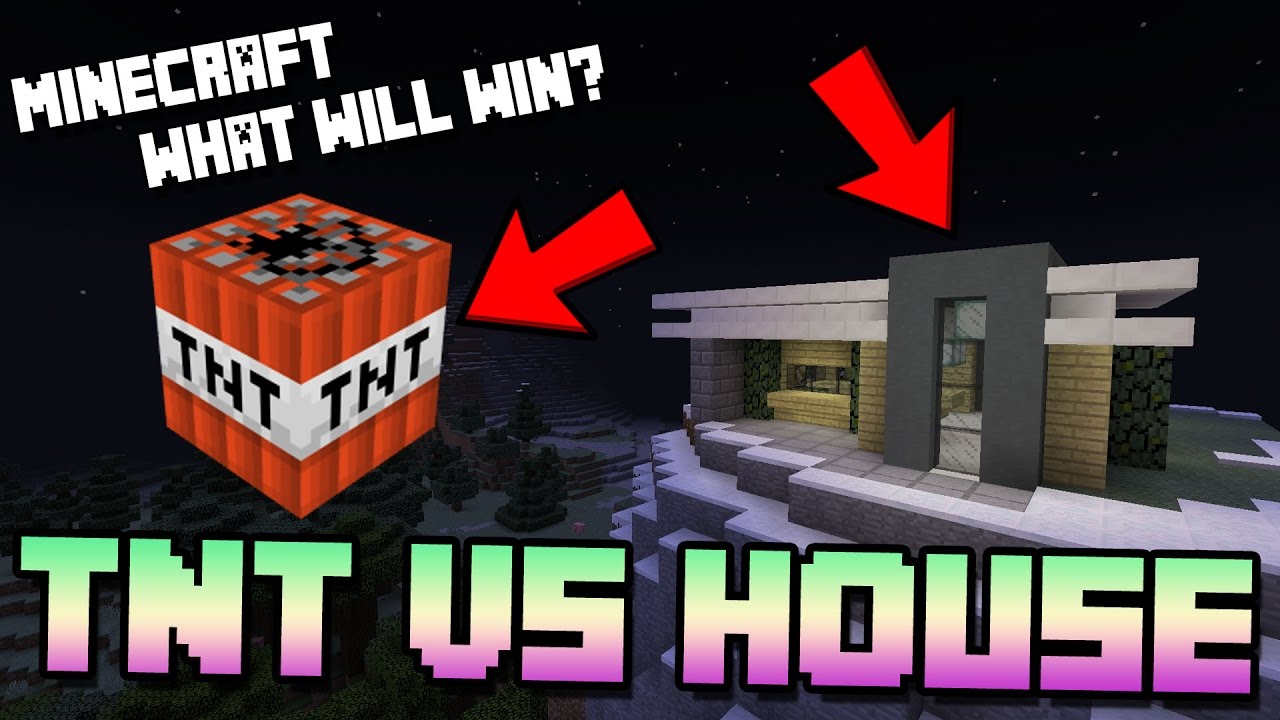
How Many Blocks Does TNT Fall Before Exploding? Unveiling Minecraft’s Explosive Secrets
The explosive world of Minecraft holds many secrets, and one question that often sparks curiosity among players is: how many blocks does TNT fall before exploding? Understanding the mechanics behind TNT’s detonation is crucial for both strategic gameplay and avoiding accidental self-destruction. This article delves into the specifics of TNT behavior in Minecraft, exploring the factors that influence its explosion timing and providing insights into how to manipulate these elements for maximum impact.
Understanding TNT Mechanics in Minecraft
TNT, or Trinitrotoluene, is a powerful explosive block in Minecraft. When activated, it doesn’t immediately explode. Instead, it enters a primed state, characterized by a flashing texture and a hissing sound. This primed state gives players a brief window of opportunity to manipulate the TNT before it detonates. The key factor influencing the explosion is the fuse duration, which translates directly to how far TNT falls before exploding.
The Fuse Duration Explained
The fuse duration is the time between when the TNT is activated and when it explodes. In Minecraft, this duration is measured in game ticks. One second in real life equates to 20 game ticks. The default fuse duration for TNT is 80 game ticks, which translates to 4 seconds. This means that, under normal circumstances, TNT falls before exploding for a period equivalent to 4 seconds of in-game time.
Factors Affecting the Fall and Explosion
Several factors can affect how far TNT falls before exploding. While the fuse duration remains constant at 4 seconds, the rate at which TNT falls is influenced by gravity and whether or not it’s in water. Here’s a breakdown:
- Gravity: TNT, like most blocks, is affected by gravity. It will fall until it hits a solid block or the ground. The speed at which it falls is determined by Minecraft’s physics engine.
- Water: Placing TNT in water significantly alters its behavior. Water slows down the TNT’s fall, meaning it won’t travel as far horizontally or vertically before exploding. Furthermore, a TNT explosion in water will not destroy blocks, only damage entities.
- Redstone Circuits: Redstone circuits can be used to activate TNT from a distance or in a specific sequence. Understanding redstone allows players to precisely control when and where the TNT falls before exploding, opening up possibilities for complex traps and automated mining systems.
Calculating the Distance TNT Falls
Determining the exact number of blocks TNT falls before exploding is not an exact science due to the nuances of Minecraft’s physics engine. However, we can provide an estimate based on the fuse duration and gravitational acceleration. In a vacuum, an object accelerates at a constant rate due to gravity. While Minecraft’s physics are simplified, the principle remains the same. Over 4 seconds, TNT will fall a considerable distance. Factors like air resistance (though minimal in Minecraft) and slight variations in the game’s physics engine can introduce minor discrepancies.
Typically, in a straight vertical fall, TNT falls before exploding roughly 10-15 blocks. This is a rough estimate, and testing in a controlled environment is recommended for precise measurements in specific scenarios.
Strategic Uses of TNT’s Fall Time
Knowing how many blocks TNT falls before exploding is essential for strategic gameplay. Here are some ways players can leverage this knowledge:
Mining and Resource Gathering
TNT is a powerful tool for clearing large areas of land quickly, making it ideal for strip mining or creating space for building projects. By understanding the fall distance, players can strategically place TNT to maximize its destructive potential and efficiently gather resources. Using multiple TNT blocks in a chain reaction can also dramatically increase the area cleared. Mastering the timing of TNT falls before exploding is key to optimizing these operations.
Defensive Structures and Traps
TNT can be incorporated into defensive structures and traps to protect bases from hostile mobs or other players. By carefully considering the fall distance and explosion radius, players can create concealed TNT traps that trigger when an enemy approaches. These traps can be designed to either directly eliminate threats or to create diversions and obstacles that hinder their progress. The precise control of TNT falls before exploding is critical for effective trap design.
Creative Building and Terrain Manipulation
Beyond its practical applications, TNT can be used creatively to shape the landscape and create unique structures. From carving out underground caverns to creating dramatic waterfalls, TNT offers a versatile tool for terrain manipulation. Understanding the fall distance and explosion radius allows players to sculpt the environment with precision and create visually stunning landscapes. Experimenting with different TNT placements and activation methods can lead to unexpected and impressive results. Knowing how far TNT falls before exploding helps with planning complex builds.
Advanced TNT Techniques
For players looking to push the limits of TNT’s capabilities, several advanced techniques can be employed:
TNT Cannons
TNT cannons are devices that use controlled explosions to launch TNT blocks over long distances. These cannons rely on precise timing and redstone circuitry to ignite the launching TNT at the exact moment, maximizing its range and accuracy. Building and operating TNT cannons requires a deep understanding of TNT mechanics, including the fuse duration and explosion radius. Mastering the art of TNT cannon construction can provide players with a powerful offensive tool. The distance TNT falls before exploding is a crucial factor in cannon design.
TNT Duping
TNT duping is a controversial technique that exploits glitches in the game’s code to create multiple copies of TNT from a single block. While this technique can be used to amass large quantities of TNT quickly, it is often considered cheating and may be patched out in future updates. The ethics of TNT duping are debated within the Minecraft community. The knowledge of TNT falls before exploding is less relevant here, as the focus is on replication rather than controlled detonation.
Underwater Explosions
As mentioned earlier, water significantly alters TNT’s behavior. While TNT explosions in water do not destroy blocks, they can still damage entities. This makes underwater TNT explosions useful for clearing out aquatic mobs or creating underwater traps. Understanding the interaction between TNT and water is essential for effective underwater combat and defense. The slower fall rate of TNT falls before exploding in water changes the dynamics of underwater explosions.
Troubleshooting Common TNT Issues
Despite its simplicity, TNT can sometimes behave unexpectedly. Here are some common issues and their solutions:
- TNT not exploding: Ensure that the TNT is properly primed with a redstone signal or by lighting it with flint and steel. Also, check for any obstructions that may be preventing the TNT from igniting.
- Explosions causing unwanted damage: Adjust the placement of the TNT and consider using water to contain the explosion. Experiment with different TNT arrangements to minimize collateral damage.
- TNT detonating prematurely: Double-check the redstone circuitry to ensure that the TNT is not being activated unintentionally. Use repeaters and delays to precisely control the timing of the explosion.
Conclusion: Mastering TNT in Minecraft
Understanding how many blocks TNT falls before exploding is a fundamental aspect of mastering this powerful tool in Minecraft. By grasping the mechanics of fuse duration, gravity, and water interaction, players can strategically utilize TNT for mining, defense, creative building, and more. Whether you’re a seasoned Minecraft veteran or a new player just discovering the wonders of TNT, this knowledge will undoubtedly enhance your gameplay experience. So go forth, experiment, and unleash the explosive potential of TNT in your Minecraft world! Remember to always prioritize safety and avoid accidental self-destruction. Happy crafting!
Further research into redstone circuits can also improve your TNT usage. [See also: Redstone Circuit Basics in Minecraft]
Understanding blast resistance is also key. [See also: Blast Resistance in Minecraft]
Consider experimenting with different block types around TNT. [See also: Minecraft Block Properties]

